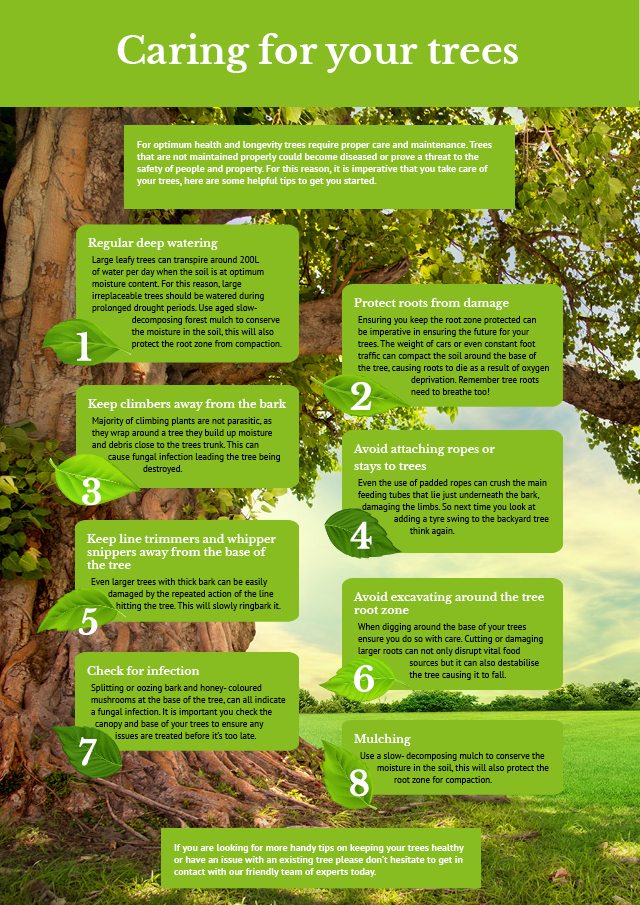Seasonal Tree Upkeep: Guidelines For Handling Trees Prior To And After They Are Gotten Rid Of
Seasonal Tree Upkeep: Guidelines For Handling Trees Prior To And After They Are Gotten Rid Of
Blog Article
Write-Up Developed By-
When it involves seasonal tree treatment, making sure proper monitoring before and after removal can significantly impact the wellness and visual appeals of your landscape. By recognizing the needed actions involved in assessing tree health and planning for elimination, you can proactively protect your residential or commercial property. But what regarding the critical practices to adhere to as soon as the tree is gone? Remain tuned to find the vital post-removal care actions that will help you cultivate a thriving and sustainable atmosphere for your trees.
Pre-Removal Tree Treatment
Prior to attending to the removal of a tree, it's critical to focus on pre-removal tree care. Beginning by analyzing the tree's health and wellness and structural stability. Search for indications of condition, insect problems, or any type of structural problems that may present a safety risk throughout elimination. It's essential to consult with a licensed arborist to identify the most effective course of action.
Trimming cheap tree trimming service near me or diseased branches can prevent further damage to the tree and make sure a smoother removal process.
Furthermore, think about the ecological influence of getting rid of the tree. Trees play an important function in our community, so growing a brand-new tree in an ideal area can help counter any loss. Guarantee that you have the needed licenses and consents for tree removal, especially if the tree is protected by regional guidelines.
Seasonal Maintenance Tips
Analyzing your tree's demands throughout the year is necessary for its health and wellness and long life. To maintain your trees in leading problem, follow these seasonal upkeep suggestions.
In spring, concentrate on trimming to remove dead or damaged branches and encourage new growth.
Summer season asks for regular watering, particularly throughout dry spells, to ensure your tree remains hydrated.
As loss methods, keep an eye out for early indications of illness or anxiety, and consider applying mulch to protect the origins throughout winter months.
In winter season, be cautious when eliminating snow from branches to avoid breakage, and remain to check your tree's general health and wellness.
Remember to adjust your care routine based on the particular demands of your tree species and neighborhood environment. By staying alert and proactive throughout the seasons, you can aid your trees prosper and thrive for several years ahead.
Post-Removal Tree Care
To make certain the health of your landscape even after tree removal, proper post-removal treatment is vital. After a tree is removed, it's crucial to fill the remaining opening with topsoil and small it to stop settling. This will aid keep the honesty of the ground and stop possible threats in the future.
Take into consideration growing new greenery instead of the removed tree to recover the balance and looks of your landscape. Regularly water the area to promote the development of new plants and avoid soil disintegration.
Evaluate the bordering trees for any type of signs of condition or stress that might have been brought on by the removed tree. Watch out for pests that may've been drawn in to the previous tree and take preventive measures to protect the staying greenery.
If needed, speak with a specialist arborist to assess the influence of the removal on the bordering trees and establish any additional care needed. By following these post-removal treatment steps, you can ensure the continued wellness and charm of your landscape.
Verdict
In conclusion, positive seasonal tree treatment is important for preserving the health and equilibrium of your landscape. By evaluating tree health and wellness, trimming, and speaking with an arborist prior to removal, you can make sure a risk-free process. After elimination, filling the hole, growing new vegetation, and routine watering will certainly promote new growth and protect against disintegration. Remember to evaluate surrounding trees for illness and seek additional treatment procedures from an arborist to maintain your landscape flourishing.
